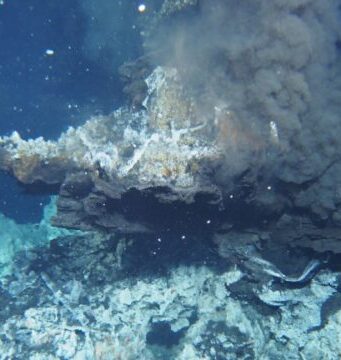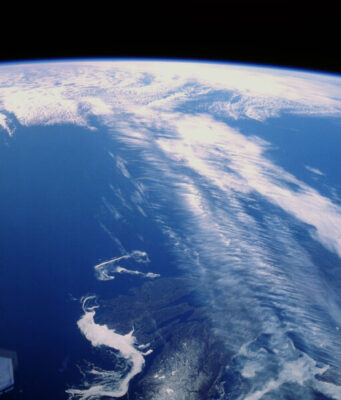The Bardarbunga eruption on Iceland has broken many records. The event in 2014 was the strongest in Europe since more than 240 years. The hole it left behind, the so-called caldera, is the biggest caldera formation ever observed. And...
Credit: University College London
Levels of global biodiversity loss may negatively impact on ecosystem function and the sustainability of human societies, according to UCL-led research.
"This is the first time we've quantified the effect of habitat loss on biodiversity globally...
Icebergs calved off from the glaciers in Marguerite Bay, Antarctic Peninsula. Credit: Alison Cook
A new study has found for the first time that ocean warming is the primary cause of retreat of glaciers on the western Antarctic Peninsula. The...
Detailed view of Earth from space, showing North Africa, Europe and the Middle East. Elements of this image furnished by NASA.
Credit: © kevinmgill / Flickr
Scientists have long suggested that global warming could lead to a slowdown -- or even...
Potential quake zone. Solid red line indicates an area of about 24,000 square miles that could move during a subduction-zone earthquake, affecting 140 million people or more. The dashed line represents a scenario in which the slip might take...
Global cloud patterns are shown. Credit: NASA Goddard Space Flight Center
A Scripps Institution of Oceanography at University of California San Diego-led research team analyzing satellite cloud records has found that the cloudy storm tracks on Earth are moving toward...
Image Credit: Flickr/Alex The Shutter
On December 31, 2016, a "leap second" will be added to the world's clocks at 23 hours, 59 minutes 59 seconds Coordinated Universal Time (UTC). This corresponds to 6:59:59 pm Eastern Standard Time, when the...
A much faster pace of evolution means that species could have proliferated much more rapidly than they do now, affording the flora and fauna of Earth ample time to acquire their enormous diversity and complexity.
Credit: © CAMIO* / Flickr
Early...
Cistern Spring in Yellowstone National Park is home to the elusive archaeon Nanopusillus acidilobi.
Credit: ORNL
A microbial partnership thriving in an acidic hot spring in Yellowstone National Park has surrendered some of its lifestyle secrets to researchers at the Department...
The preservation of Cretaceous mollusk fossils from Seymour Island is excellent, with shells preserving original mother-of-pearl material as in these two specimens of Eselaevitrigonia regina. Credit: Sierra V. Petersen
A new reconstruction of Antarctic ocean temperatures around the time the...
A simulation of the Antarctic ozone hole, made from data taken on October 22, 2015.
Credit: NASA's Goddard Space Flight Center (edited by MIT News)
Scientists at MIT and elsewhere have identified the "first fingerprints of healing" of the Antarctic ozone...


















